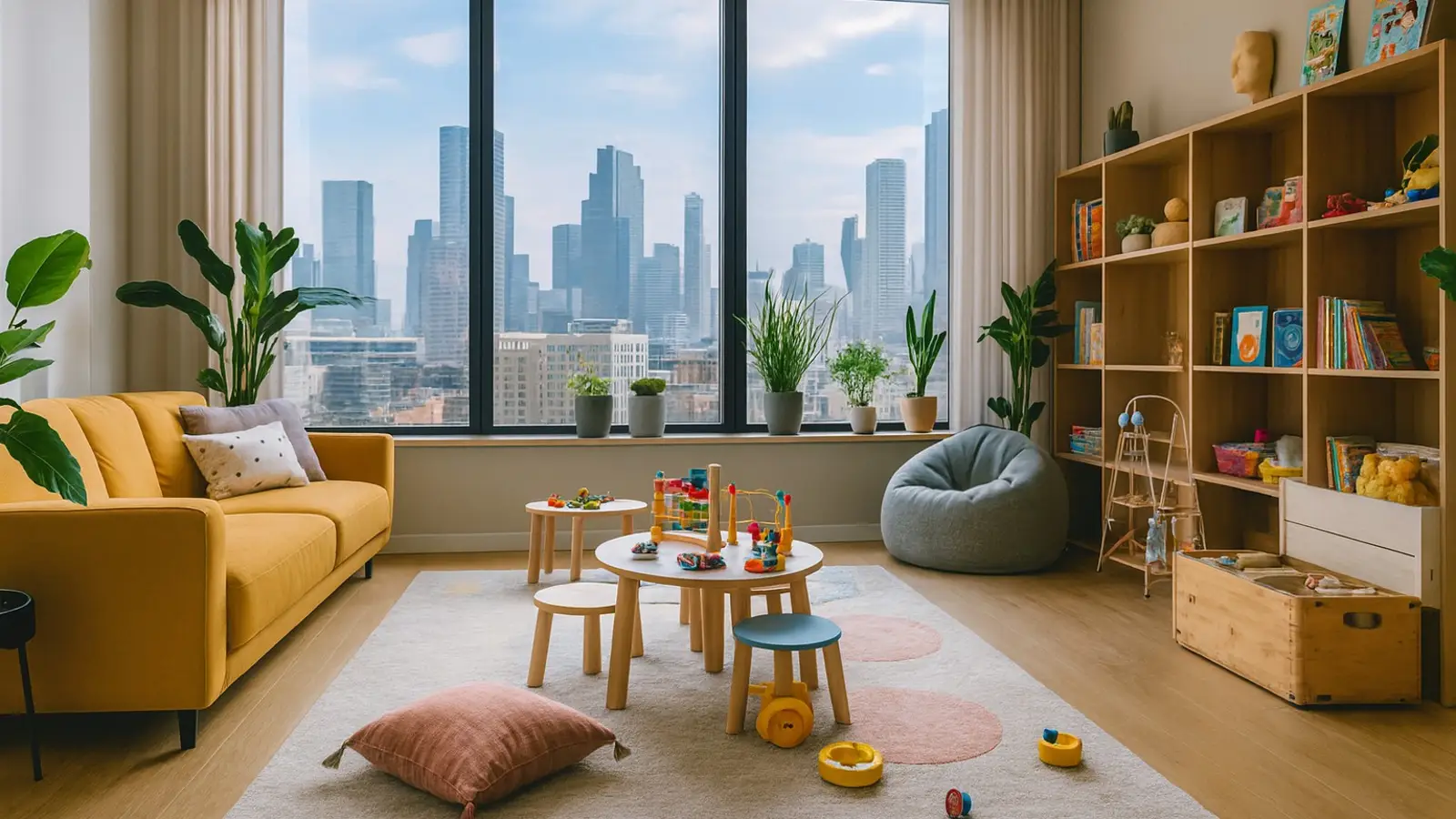Designing a Child-Friendly Home: Safety, Storage & Style
Create a child-friendly home without sacrificing style: safe furniture, smart storage, soft rugs, layered lighting, and easy zoning tips for busy families.

Generated by Dall-e
Creating a home where children live calls for a special approach. The goal isn’t to turn every room into a playground, but to strike a steady balance between practicality and aesthetics so both adults and kids feel at ease. Here’s how to get there without sacrificing safety or comfort.
Safety comes first
When little ones are around, safety moves to the top of the list—and it still matters once they’re school-age and on the move. Start with furniture that has rounded edges to reduce bumps and bruises. Pay attention to what things are made of, too: choose safe, hypoallergenic materials. Wood, cork, natural fabrics, and paints without harmful additives aren’t just a passing trend; they’re a sensible choice for a child-friendly environment.
Floors deserve careful thought as well. In play zones and high-traffic areas, soft rugs or carpet with a non-slip backing make everyday movement less risky while adding warmth underfoot.
Convenience lives in the details
Functionality in a family home often hinges on storage. Open shelving, bins and boxes, and drawers under beds simplify cleanup and make it easier to keep things in order. For younger children, storage at eye level helps: toys and essentials are within reach, and tidying up becomes more independent.
Multi-purpose furniture adds another layer of ease. Beds with built-in drawers, convertible tables, and height-adjustable chairs adapt to a child’s growth and changing needs, reducing the pressure to replace pieces frequently.
A dedicated play corner is optional but welcome. It doesn’t need walls or a separate room—sometimes a soft rug, a couple of cushions, and a toy basket are enough. Children stay close to the family while still having a space that feels like their own.
Color, light, and textiles
A calm, neutral base makes rooms feel lighter and more serene. White, beige, and light gray work well as the backdrop. To keep the interior from looking flat, introduce color through textiles, cushions, and decorative accents—enough to add character without crowding the space.
In children’s rooms, themed touches help reflect their interests. Wallpaper with patterns, removable stickers, and posters are easy to refresh as tastes evolve.
Layered lighting is essential: combine an overhead fixture with wall lamps and desk lights. This mix supports a comfortable atmosphere and protects eyesight, especially in the evening.
Planning the layout
Even a compact apartment can be zoned effectively. You don’t always need partitions—thoughtful furniture placement can outline areas on its own. A shelving unit, for example, can subtly separate a play area from a rest zone. Color and lighting also help define boundaries without closing off the room.
Don’t overlook vertical space. Floor-to-ceiling shelving, hanging storage, and wall organizers keep surfaces clear and make it easier to maintain order.
A home that grows with children
A household with kids is a living, changing space. The aim is to create an environment that supports play, learning, rest, and time together. Coziness and functionality aren’t opposites; they complement each other. With smart organization, the whole family can feel genuinely comfortable at home.
